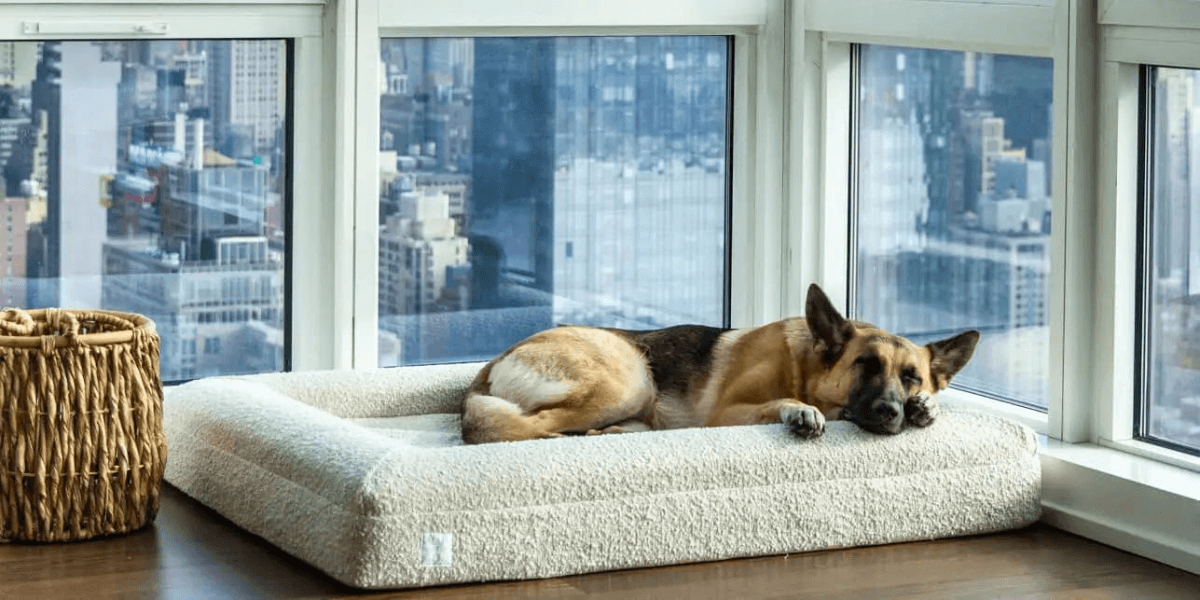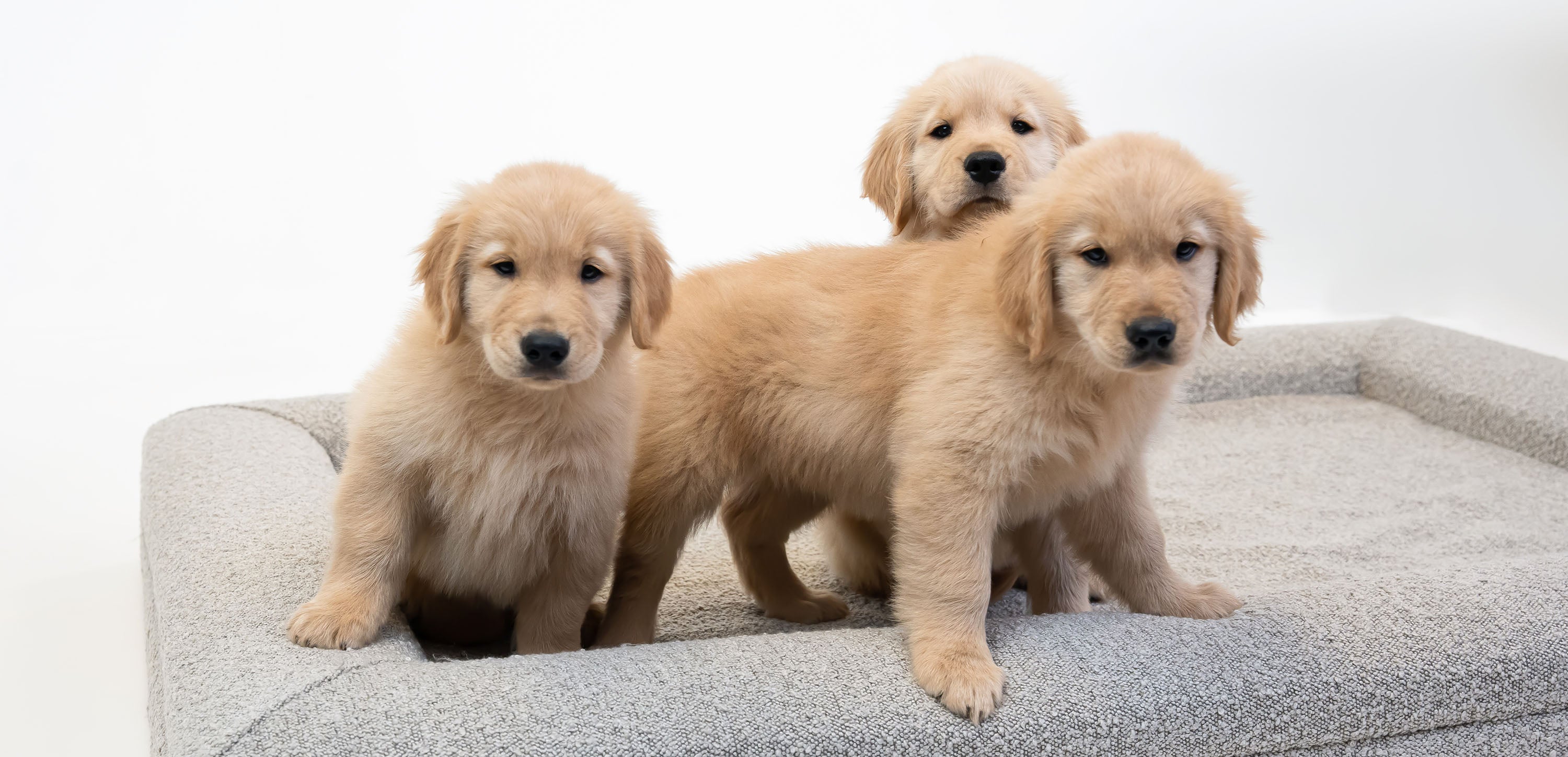
Orthopedic vs. Memory Foam Dog Beds: Which is Better?
As dog parents ourselves, we are always on the lookout for ways to enhance the comfort and well-being of our furry friend, and choosing the right dog bed is always one of the first things on the list to consider. The debate between orthopedic foam and memory foam dog beds is ongoing, but understanding the differences can help you make the best choice for your pet's needs. This post delves into the nuances of each type, and also covers some key factors to look into if you’re on the fence between an orthopedic or memory foam dog bed.
Understanding foam types
While the terms “orthopedic foam” and “memory foam” are often used interchangeably, there are a some key distinctions between the two:
Memory foam
Initially developed by NASA, memory foam is a material made out of polyurethane that has become popular in both human and pet bedding due to its ability to conform to the body in response to heat and pressure. For dogs, this means a bed that molds to the shape of their body, providing a unique level of support that can significantly enhance sleep quality. Memory foam beds are particularly beneficial for dogs with arthritis or other joint issues, as they help distribute weight evenly and reduce pressure points.
Orthopedic foam
Orthopedic foam beds refers to any mattress materials–including memory foam–that are designed to offer enhanced support and cushioning to support a person's (or pet’s) bones and joints. The term "orthopedic" isn't regulated in the pet product industry, meaning the quality and type of foam can vary widely between products. This is why it’s important to always double check that the mattress material for an orthopedic dog bed is actually backed by a certification like CertiPUR-US®–especially if the bed is marketed as a “true” orthopedic dog bed. Generally, true orthopedic beds will provide excellent support for dogs with arthritis, hip dysplasia, back or muscle problems, joint problems, or soft tissue injuries.

Choosing between a memory foam or orthopedic foam dog bed
When selecting between an orthopedic or memory foam dog bed, the primary consideration to factor is your dog’s age and health needs. Older dogs (or dogs that are prone to having joint issues) may benefit more from the added cushion and support of a well-made orthopedic bed made from true memory foam, since these beds tend to offer a sturdier, no-sag build and may also have additional features like bolstered sides to further enhance comfort.
Some other factors to consider when choosing the right bed for your dog include:
1. Size and fit
Measure your dog from the base of their neck to the base of their tail, then add 6 to 12 inches or round up to the next-biggest bed size for optimal comfort. For Bluewater Dog orthopedic beds, a small dog bed is good for dogs under 20”, a medium dog bed for dogs under 24”, a large dog bed for dogs under 34", and an extra large dog bed for dogs under 47".
Another way to measure your dog would be to do so based on their weight, which would roughly break down into a small dog bed for dogs up to 30 pounds, a medium dog bed for dogs between 30 to 60 pounds, a large dog bed for dogs between 60 and 90 pounds, and an extra large dog bed for dogs over 90 pounds.
2. Foam height
The thickness of the foam–especially if you’re looking to buy an orthopedic dog bed–should be sufficiently thick to adequately support the weight of your dog. As a general rule of thumb, an orthopedic bed should have at least 3 inches of memory foam, or up to 7 inches if your dog is particularly heavy.
3. Type of sleeper
It’s also worthwhile to see what type of sleeper your dog tends to be, whether that is a “curler” where they like to be securely surrounded within their bed, a “burrower” where they like to dig into their bed to make a cozy nest, a “sprawler” where they like to spread out in all directions, or a “leaner” where they prefer the support and security of a bolster-style dog bed.
4. Maintenance and care
Consider how easy each bed is to clean and maintain. Removable, machine-washable covers are a plus, especially for dogs prone to accidents or shedding.
At the end of the day, the best choice depends largely on your dog's individual needs. Taking the time to consider those needs and reading through various product reviews will help you make an informed decision that suits your dog’s sleeping habits.
The Bluewater Dog Bed
Being dog parents ourselves, our goal has always been to give our German Shepherd, Aya, the happiest life she deserves–whether that be when she’s awake or when she’s asleep after a long day enjoying the water. Since we couldn’t find a dog bed on the market that seemed to satisfy all her needs, we decided to make our own.
Our luxury, orthopedic Bluewater Dog beds are thoughtfully designed with high-density, layered orthopedic CertiPUR-US® certified memory foam, ultra-soft, washable OEKO-TEX 100 bouclé fabric, and subtly raised bolsters. We also offer a 3-year no-sag warranty and a 12-month warranty on any manufacturing defects–so go ahead, treat your dog to an unparalleled sleep experience with the Bluewater Dog bed.

